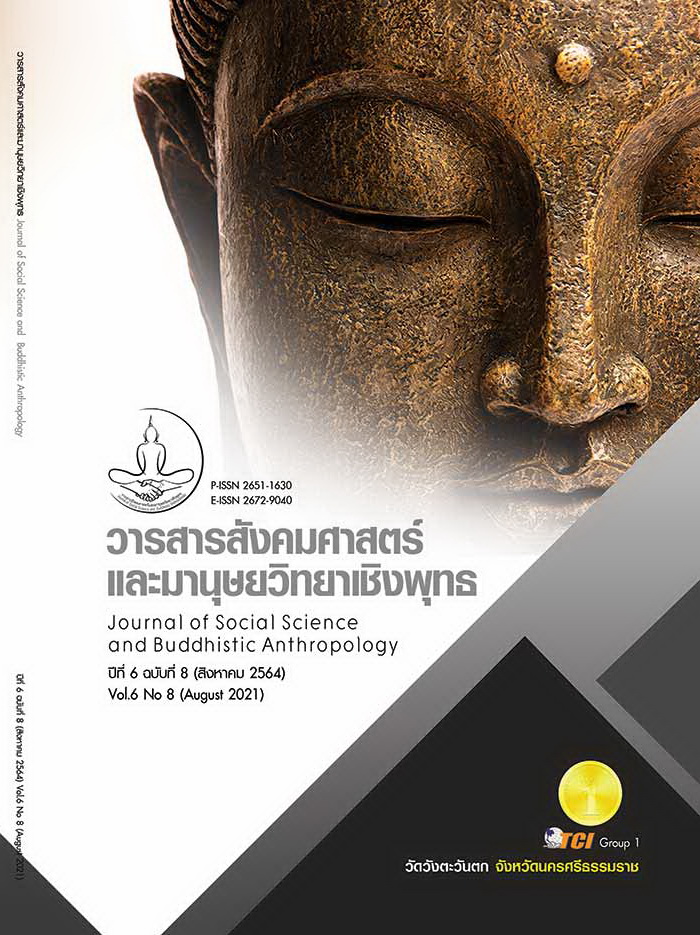FUND MANAGEMENT GUIDELINES FOR EFFECTIVE ELEMENTARY SCHOOL LUNCHES TO REDUCE MALNOURISHED STUDENTS' PROBLEMS
Keywords:
Management Approach, School Lunch Project Fund, MalnutritionAbstract
The objectives of this research article were to 1) studying problems of elementary school lunches, 2) developing fund management guidelines for elementary school lunches, and 3) learning lessons and prepare suggestions for school lunch fund management. This research is mixed-method research. The research process consisted of 3 steps; 1) studying problems with 216 people; the school administrators, teachers, and experts by meeting and interview. 2) developing guidelines of fund management for elementary school lunches and review guidelines using workshops and group discussions with 60 experts and try out guidelines with relevant agencies and 52 target schools by a feasibility assessment, possibility, and performance reporting. 3) learning lessons and prepare policy suggestions with the 156 administrators and teachers using dialogue. The data analyzed by using mean, standard deviation, and content analysis. The research results were as follows; The problems: the government managed budget lately, the schools didn't manage the school lunch project effectively. The guidelines for school lunch management; schools should have the information available, and the management guidelines are clear. The guidelines have 5 components: principle, objectives, operation, result, and success conditions classified into policy level and operational level. The overall results of suitability ( = 4.29, S.D. = 0.66) and possibility (
= 4.22, S.D. = 0.64) of developing the management in each aspect revealed at a high level. Using guidelines, the ability to operate according to the developed guidelines overall is at a high level. (
= 4.27, S.D. = 0.69). The rate of malnourished students' problems reduced by 2.91%; Public relation was used in various methods, the satisfaction of stakeholders was at a high level (
= 4.00, S.D. = 0.76). The results of learning lessons and prepare suggestions found that; schools have good practices to reduce malnutrition problems; the fund management committee's representative should be the person who is officially assigned.
References
ชนก แสนติยศ. (2558). การบริหารงานโครงการอาหารกลางวันของสถานศึกษาขั้นพื้นฐานในพื้นที่พิเศษ สังกัดสำนักงานเขตพื้นที่การศึกษาประถมศึกษาเชียงราย เขต 3. วารสารมหาวิทยาลัยราชภัฏเชียงราย, 8(18), 1-10.
ณัฐธิกานต์ โสกงโสด. (2559). ปัญหาการดำเนินงานโครงการอาหารกลางวันของโรงเรียน สังกัดสำนักงานเขตพื้นที่การศึกษาประถมศึกษาบุรีรัมย์เขต 2. ใน การประชุมวิชาการและเสนอผลงานวิจัยระดับชาติ ครั้งที่ 3 ก้าวสู่ทศวรรษที่ 2: บูรณาการงานวิจัยใช้องค์ความรู้สู่ความยั่งยืน 17 มิถุนายน 2559 . วิทยาลัยนครราชสีมา จังหวัดนครราชสีมา.
บุญชม ศรีสะอาด. (2556). การพัฒนารูปแบบการประเมินสมรรถนะครูระดับประถมศึกษา สังกัดสำนักงานคณะกรรมการการศึกษาขั้นพื้นฐาน. วารสารการวัดผลการศึกษา มหาวิทยาลัยมหาสารคาม, 22(1), 95-113.
พรพิพัฒน์ ตั้งจิตรวัฒนากุล. (2560). แนวทางการพัฒนาภาวะผู้นำแบบให้บริการของผู้บริหารสถานศึกษาระดับมัธยมศึกษา. วารสารสักทอง: วารสารมนุษยศาสตร์และสังคมศาสตร์ (สทมส.), 23(1), 38-54.
พระราชบัญญัติการศึกษาแห่งชาติ พ.ศ. 2542. (2542). ราชกิจจานุเบกษา. เล่ม 116 ตอนที่ 74 ก, หน้า 4. (19 สิงหาคม 2542).
สำนักงานกองทุนเพื่อโครงการอาหารกลางวัน. (2559). คู่มือการดำเนินงานกองทุนเพื่อโครงการอาหารกลางวันในโรงเรียน. กรุงเทพมหานคร: กองทุนเพื่อโครงการอาหารกลางวันในโรงเรียนประถมศึกษา กระทรวงศึกษาธิการ.
สำนักงานคณะกรรมการการศึกษาขั้นพื้นฐาน. (2561). ข้อมูลสารสนเทศทางการศึกษา ปี 2558 -2 559. กรุงเทพมหานคร: กระทรวงศึกษาธิการ.
สุภาภรณ์ กิตติรัชฎานนท์. (2558). การพัฒนารูปแบบการส่งเสริมการจัดการเรียนรู้เพื่อสร้างโอกาสและคุณภาพของผู้เรียนโดยใช้การเรียนรู้ทางไกลผ่านเทคโนโลยีสารสนเทศ ของโรงเรียนศึกษาสงเคราะห์ สำนักงานคณะกรรมการการศึกษาขั้นพื้นฐาน. กรุงเทพมหานคร: ศูนย์พัฒนาคุณภาพการศึกษาด้วยเทคโนโลยีการศึกษาทางไกล.
Michael Ollinger and Joanne Guthrie. (2015). Economies of Scale, the Lunch-Breakfast Ratio, and the Cost of USDA School Breakfasts and Lunches. ERR-196. U.S.: Department of Agriculture, Economic Research Service.
Rethmeyer. (1988). Statistics : An Introductory Analysis (3 nd). New York: Kaper & Row, Publisher.








